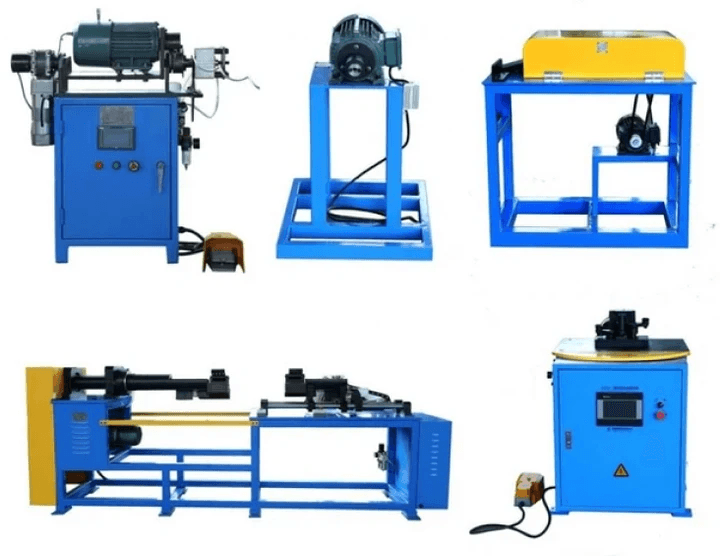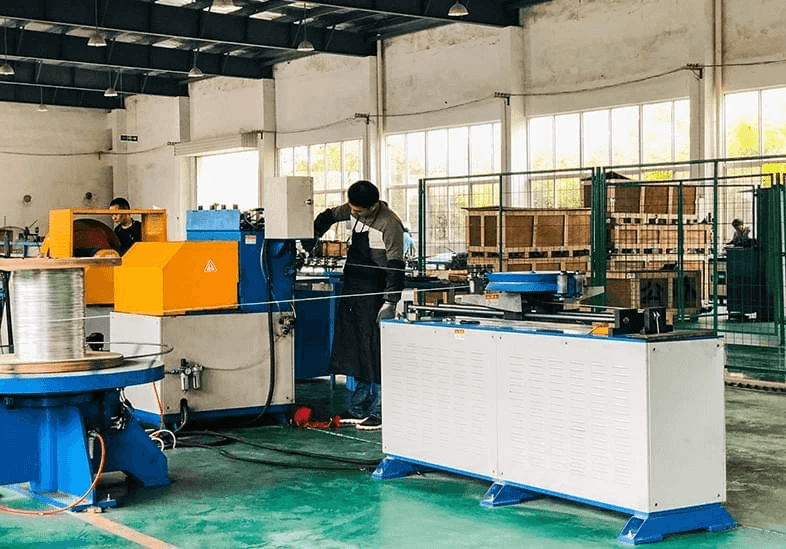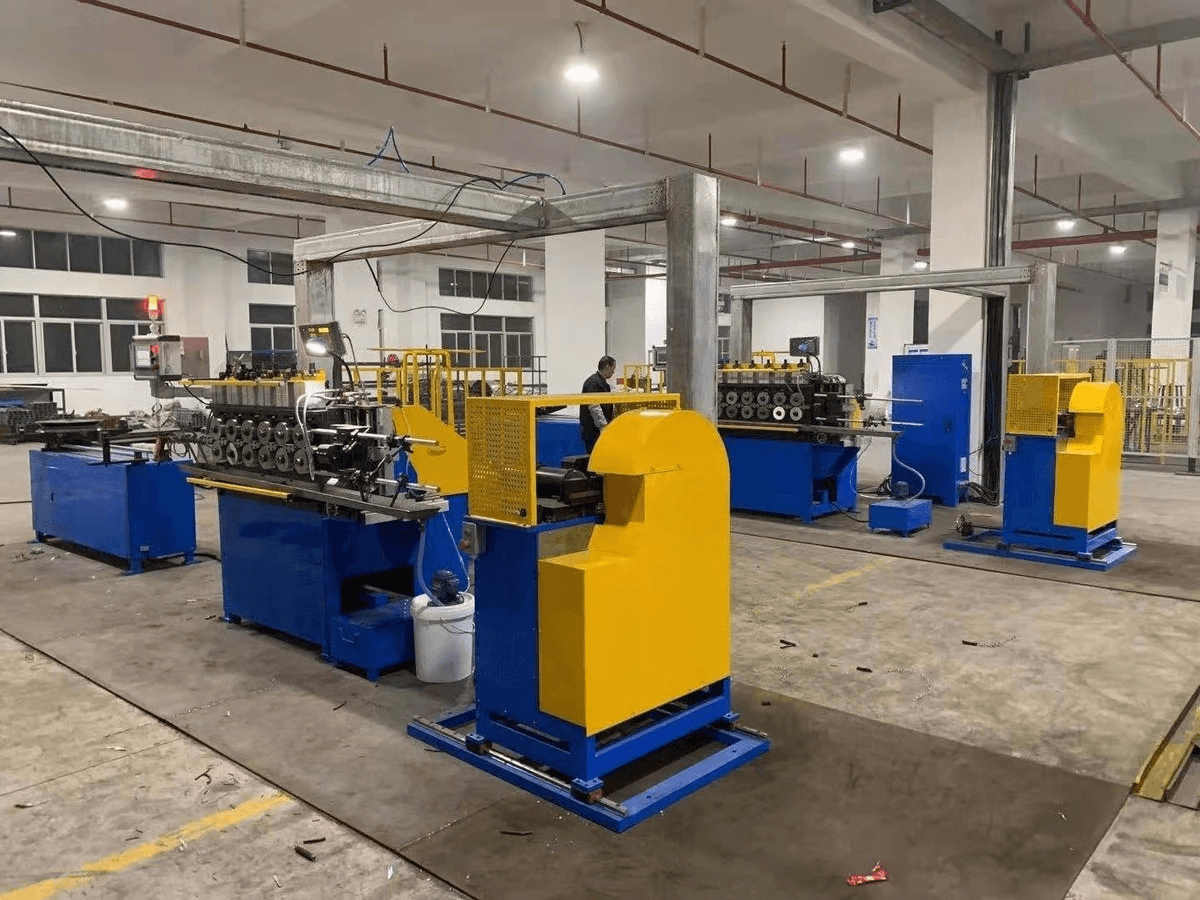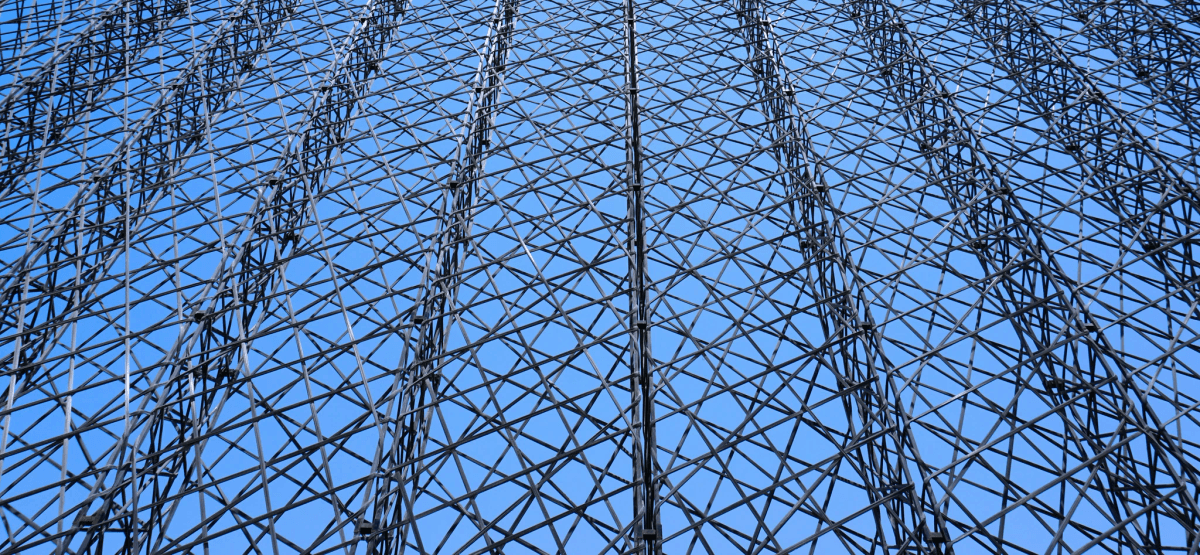Introduction

In the world of surface preparation and finishing, commercial sand blasting machines play a pivotal role. These powerful tools use abrasive materials to clean, smooth, or shape surfaces, making them essential in various industries. Understanding the nuances of sand blasting is crucial for selecting the right equipment that meets your specific needs.
Understanding Commercial Sand Blasting Machines
Commercial sand blasting machines are designed for heavy-duty applications where efficiency and precision are key. They utilize high-pressure air to propel abrasive materials against surfaces, effectively removing contaminants and preparing them for further treatment. Familiarity with these machines helps businesses ensure they choose the best fit for their operational requirements.
Types of Sand Blasting Equipment Explained
There is a diverse range of sand blasting equipment available on the market today, each tailored for specific tasks and environments. From portable units ideal for small jobs to industrial sandblasters capable of handling large-scale projects, understanding these options is vital. Additionally, bead blasting equipment offers unique benefits like achieving a smoother finish, making it an attractive choice in certain applications.
Importance of Choosing the Right Machine
Selecting the appropriate sand blast equipment can significantly impact productivity and quality outcomes in any project. The right machine not only enhances efficiency but also ensures safety compliance and optimal results on various surfaces. Therefore, investing time in understanding different models and their applications can lead to long-term benefits for businesses relying on effective abrasive blasting techniques.
Overview of Commercial Sand Blasting Machines

Definition of Sand Blasting Techniques
Sand blasting, often referred to as abrasive blasting, involves propelling fine particles at high velocity to clean or etch surfaces. The term sand blasting originates from the use of sand as an abrasive material; however, modern practices employ a variety of media such as glass beads or aluminum oxide in bead blasting equipment. This technique is widely used in industries ranging from automotive repair to construction because it provides efficient surface preparation with minimal damage.
How Sand Blasting Works
The operation of a sand blasting machine is quite fascinating and involves several key components working in unison. Compressed air or another power source propels the abrasive material through a nozzle at high speeds towards the target surface. As the particles collide with the surface, they dislodge contaminants and create a smooth finish—making industrial sandblasters indispensable tools in many workshops.
Applications in Various Industries
Commercial sand blasting machines are versatile tools that find applications across numerous sectors. In automotive manufacturing, they are employed to prepare metal surfaces for painting by removing rust and old coatings efficiently. Similarly, construction companies utilize sand blast equipment for cleaning concrete surfaces and preparing them for sealing or coating—demonstrating just how integral these machines are in maintaining quality standards across various industries.
Different Types of Sand Blasting Machines

Overview of Abrasive Blasting Equipment
Abrasive blasting equipment encompasses a range of machines designed to propel abrasive materials at high speeds onto surfaces. This process effectively removes contaminants, paints, and rust while preparing surfaces for further treatment or finishing. In the realm of commercial sand blasting machines, the choice often boils down to the specific application and the type of material being blasted.
The primary categories include pressure blasters and siphon blasters; both have their distinct advantages depending on the task at hand. Pressure blasters are known for their speed and efficiency, while siphon blasters are typically more affordable and easier to operate for smaller jobs. Regardless of your choice in sand blast equipment, understanding these distinctions will help you select the right tool for your needs.
Bead Blasting Equipment Explained
Bead blasting equipment is a specialized form of abrasive blasting that utilizes glass beads as its medium. This method is particularly effective for achieving a smooth surface finish without damaging the underlying material—ideal for delicate parts or components in industries like automotive or aerospace manufacturing. Unlike traditional sandblasting techniques that may leave rough textures, bead blasting provides a refined touch.
In addition to its gentle approach, bead blasting also minimizes contamination risks since glass beads are non-reactive compared to other abrasives like silica sand. Many industrial sandblasters incorporate bead-blasting capabilities into their design to enhance versatility across applications. Whether you're looking to clean intricate parts or prepare surfaces for painting, bead blasting equipment stands out as a valuable option in your arsenal.
Differences Between Portable and Stationary Machines
When weighing options between portable and stationary machines in the world of commercial sand blasting machines, it’s essential to consider your operational needs. Portable machines offer flexibility; they're ideal for on-site work where moving heavy materials isn't feasible or practical—think construction sites or remote locations needing quick surface preparation with minimal setup time.
On the flip side, stationary machines tend to offer greater power capacity and larger abrasive media storage which can be beneficial for high-volume projects within workshops or factories. These industrial sandblasters are built for durability and sustained use but lack mobility compared to their portable counterparts. Ultimately, choosing between portable and stationary options comes down to evaluating project demands versus convenience; there's no one-size-fits-all solution when it comes to selecting your ideal sand blast equipment.
Key Features to Consider

Size and Capacity of the Sand Blasting Machine
The size and capacity of a sand blasting machine are crucial considerations that directly affect its performance. Larger machines often allow for bigger projects and higher throughput, making them ideal for industrial settings where time is money. Conversely, if you’re operating in tighter spaces or have smaller tasks at hand, a more compact model may be the better option for your needs.
Capacity is not just about physical dimensions; it also refers to the volume of abrasive material the machine can hold and process efficiently. For instance, an industrial sandblaster with a higher capacity will enable longer operational periods without frequent refills. Ultimately, choosing the right size ensures that you maximize productivity while minimizing downtime.
Power Source: Air vs. Electric
Power source selection plays a pivotal role in determining how your sand blasting operations will run day-to-day. Air-powered machines are often favored in heavy-duty applications due to their ability to deliver consistent pressure over extended periods—perfect for large-scale projects requiring robust performance from your abrasive blasting equipment. On the other hand, electric models shine in environments where noise reduction and energy efficiency are priorities.
Each power source has its advantages; air compressors generally offer more flexibility regarding pressure adjustments while electric machines provide ease of use with less maintenance required over time. However, consider factors such as availability of power sources on-site and any specific project requirements when making your decision. Choosing wisely between air vs electric will ensure that your sand blasting operations remain efficient and effective.
Safety Features and Compliance Standards
Safety should never be an afterthought when investing in a commercial sand blasting machine; it's paramount for both operator well-being and regulatory compliance. Look for machines equipped with features like pressure relief valves, automatic shut-off systems, and protective shields which can significantly reduce risks associated with abrasive blasting activities. Compliance with industry standards is also essential—ensuring that your equipment meets necessary regulations protects not only employees but also minimizes legal liabilities.
In addition to built-in safety mechanisms, consider whether the manufacturer provides clear operational guidelines alongside training resources for users of their bead blasting equipment or industrial sandblasters. This added layer enhances safety awareness among operators who may be new to such machinery or techniques like sandblasting itself. Ultimately prioritizing safety features will lead to a more secure work environment while maximizing productivity.
Leading Brands in Sand Blasting

Spark Electronic Technology Wuxi Co., Ltd. Overview
Spark Electronic Technology Wuxi Co., Ltd. is a prominent manufacturer specializing in industrial sandblasters and abrasive blasting equipment. Founded with a vision to innovate, they focus on creating efficient and reliable sand blast equipment that enhances productivity and safety for their users. With years of experience under their belt, this sandblasting company has gained a loyal customer base thanks to its commitment to quality and customer satisfaction.
Popular Models and Innovations
Among Spark's lineup, several models stand out due to their unique features and innovations in sand blasting technology. The company offers an array of commercial sand blasting machines, including portable options for flexibility on job sites as well as stationary models designed for heavy-duty tasks. Notably, their bead blasting equipment incorporates advanced technology that minimizes dust while maximizing efficiency—perfect for those looking to maintain a clean working environment without compromising on performance.
Customer Testimonials and Case Studies
Customer testimonials highlight the effectiveness of Spark's commercial sand blasting machines in various applications across different industries. Many users rave about the durability and ease of use of their industrial sandblasters, noting how these machines have transformed their operational processes by saving time and reducing labor costs. Case studies further illustrate successful implementations where businesses have significantly improved surface preparation quality through Spark’s innovative sand blast equipment solutions.
Selecting the Right Sand Blasting Company

Factors to Evaluate When Choosing a Provider
First and foremost, consider the provider's reputation in the industry. Look for customer reviews and testimonials that highlight their experience with specific sand blast equipment or industrial sandblasters. Additionally, assess their range of products; a company that offers both portable and stationary machines may provide more tailored solutions for your needs.
Another key factor is the level of expertise in abrasive blasting equipment. You want a provider that understands the nuances of different sand blasting techniques and can guide you toward selecting the right machine for your application. Don’t forget to inquire about their maintenance services; a reliable company should offer comprehensive support throughout your equipment's lifespan.
Lastly, check if they offer customization options for their sand blasting machines. Custom features can enhance performance based on your unique requirements, whether you're using bead blasting equipment or traditional commercial models. The goal is to find a provider that not only sells machines but also partners with you in achieving optimal results.
Importance of After-Sales Support
After-sales support is often an overlooked aspect when selecting a sand blasting company but can be critical for long-term satisfaction. A good provider should offer training on how to operate your new commercial sand blasting machine effectively and safely. This ensures that you get maximum efficiency from your investment while minimizing risks associated with improper use.
Moreover, having access to technical support after purchase is invaluable when issues arise with your industrial sandblaster or other abrasive blasting equipment. Quick responses from knowledgeable staff can save you time and money by resolving problems efficiently rather than letting downtime drag on unnecessarily.
Lastly, consider warranty offerings; companies that stand behind their products typically provide longer warranties as part of robust after-sales service packages. This reflects confidence in their commercial sand blasting machines and gives customers peace of mind regarding future repairs or replacements.
Comparing Costs and Services
When comparing costs among different sandblasting companies, it's vital not just to look at price tags but also what’s included in those prices. Some providers may lure you in with low initial costs but could skimp on essential services like installation or training for using the new sand blast equipment effectively.
Make sure to ask about any hidden fees associated with delivery or maintenance contracts as well—transparency here is key! Additionally, take note of how flexible each company's service offerings are; some may provide package deals including both equipment purchase and ongoing maintenance plans which could save you money down the line.
In conclusion, while cost is certainly important when choosing an industrial sandblaster supplier, don’t let it be your only consideration—evaluate all aspects including service quality and after-sales support before making your final decision!
Conclusion
In conclusion, investing in a quality commercial sand blasting machine is pivotal for achieving optimal results in various industrial applications. The right sand blast equipment not only enhances efficiency but also ensures safety and compliance with industry standards. By choosing high-quality abrasive blasting equipment, businesses can improve productivity and reduce long-term operational costs.
Benefits of Investing in Quality Equipment
A reliable industrial sandblaster provides consistent performance, ensuring that projects are completed on time and to the highest standards. Additionally, investing in durable sand blasting machines can lead to fewer repairs and downtime, ultimately saving money over time.
Quality equipment also often comes with advanced features that enhance usability and safety. For example, modern bead blasting equipment may include improved dust collection systems that protect operators from harmful particles. This focus on safety not only benefits workers but also helps businesses comply with stringent health regulations.
Maintaining Your Sand Blasting Machine
Regular maintenance of your commercial sand blasting machine is crucial for its longevity and performance efficiency. Routine checks on components like hoses, nozzles, and filters can prevent unexpected breakdowns during critical operations. Furthermore, keeping your sandblast equipment clean will ensure optimal operation and help maintain the quality of your work.
It's also essential to follow manufacturer guidelines regarding maintenance schedules and procedures to keep your industrial sandblaster running smoothly. Regular servicing by a qualified technician can identify potential issues before they escalate into costly repairs or replacements. In addition to enhancing performance, proper upkeep ensures that your investment continues to deliver returns over its lifespan.
Future Trends in Sand Blasting Technology
The future of sand blasting technology promises exciting advancements aimed at improving efficiency and environmental sustainability. Innovations such as automated abrasive blasting systems are becoming more prevalent, allowing for higher precision while reducing manual labor requirements. These developments not only streamline operations but also enhance safety measures within the workplace.
Moreover, eco-friendly abrasives are gaining traction as industries strive for greener practices; this trend reflects a growing awareness of environmental responsibility among businesses utilizing sandblast equipment. The integration of smart technology into commercial sand blasting machines is another trend on the horizon; remote monitoring capabilities will allow operators to optimize performance from afar while minimizing downtime.
As these trends evolve, companies must stay informed about emerging technologies that could revolutionize their approach to abrasive blasting equipment usage—ensuring they remain competitive in an ever-changing market landscape.

